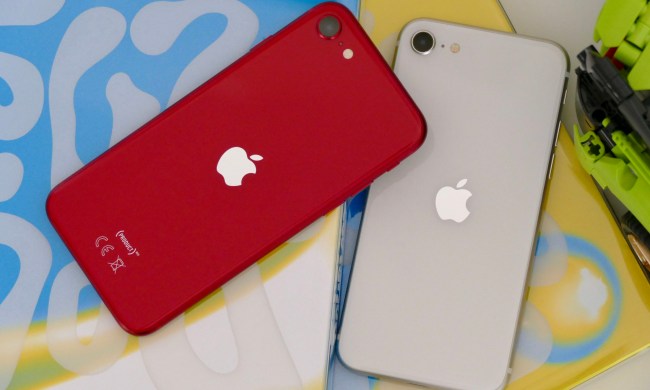
Here’s everything you need to know about it.
Samsung Z4
Sure enough, the Z4 isn’t a massive powerhouse. The screen — which is covered in a curved 2.5D glass panel, an unusual feature at this price — measures 4.5 inches and has a 480 x 800 pixel resolution, smaller and lower resolution than early rumors predicted, while the processor is an unnamed 1.5GHz quad-core chip. It’s accompanied by 1GB of RAM, 8GB of internal storage space, and a MicroSD card slot for cards up to 128GB capacity.
It has a pair of cameras, both of which have 5 megapixels and an f/2.2 aperture, plus a collection of fun camera modes. Interestingly, both have flash units — a dual LED flash on the back, and a single LED flash on the selfie camera around the front. There’s good news on the connectivity front, as the Z4 has 4G LTE, VoLTE, and even VoWiFi if it’s available on the chosen network.
The 143-gram device has a 2,050mAh battery inside, and will come in either single-SIM or dual-SIM configurations, depending on where it’s released. Samsung will sell the Z4 in black, gold, and silver color schemes.
Tizen 3.0
What about Tizen 3.0 — what’s new inside? The bulk of Tizen 3.0’s new features focus on performance. According to early developer notes, the update packs Khronos’ Vulkan graphics API, which minimizes overhead and reduces CPU load, and the speedy open-source web runtime Crosswalk. There’s support for 64-bit Intel and ARM CPUs, too, which Samsung says should boost CPU-intensive apps like video editors and games.
That’s not all that’s new in Tizen 3.0. It supports multiple users on a single device, and voice commands via S Voice. And new recognition APIs support facial detection and image recognition. Samsung’s also improved Tizen’s security features. It introduces a “new security model” that simplifies “policy management,” an “anti-virus framework” and “privacy guard” that aim to ensure rogue applications don’t gain access to personal information.
That’s encouraging news in light of an April report that said Tizen contains as many as 40 unknown bugs, or zero-days, that could allow a cyber criminal to hack devices without needing to physically access them. One vulnerability involving TizenStore, Tizen’s app store, could let a hacker pack malicious code in a software update. In response to the report, Samsung said it was working on addressing the exploits. And based on what we’ve seen of Tizen 3.0, that certainly seems to be the case.
What makes the Z4 and Tizen 3.0 easy to use? Samsung says it’s easy to add shortcuts to frequently used features, which can be activated without returning to the home screen. These include call features, the torch app, and music functions. A battery manager helps stretch out standby time by letting you tailor power consumption needs to your expected use. Additionally, gesture recognition and voice control features for the camera.
Where to buy the Samsung Z4
Samsung’s Tizen phones are primarily aimed at developing markets, where its Galaxy Android phones are often prohibitively expensive. The Z4 has been announced for India, where it will go on sale May 19, at an equivalent local cost of around $90. Additional markets will be confirmed in the future, but don’t expect the U.S. to be among them.
Article originally published May 1. Updated on May 15 by Andy Boxall: Added in official news of the Z4, its price, and specifications.


